
How and why do brokers charge fees
Some brokers operate low-cost platforms and compete only on fees. These can grab the headlines, but the downside is that other areas of investor support are scaled back as well.
The worst-case scenario is that a broker is unregulated and offers terms that are too good to be true. This puts your entire cash pile at risk.
Effective customer support, interesting trade research and a high-quality trading platform all cost money. The costs of complying with regulatory requirements also need to be factored in. For many, it’s a case of understanding that a professional operation needs to make money but find the middle-ground.
There’s no point skimping on fees if you then have a position go out of control and can’t contact a help desk. Nor is there much to be gained from paying more than you need to for effectively the same service.
Transparency — how to understand broker fees
One very important aspect of broker T&Cs is how transparent a firm is in terms of what they charge their clients.
It can be one of the simplest ways to measure a broker’s position in the market. The brokers that feel they have an advantage often keep things simple. After all, it’s to their advantage if clients can easily understand what’s going on.
Unfortunately, Hargreaves Lansdown doesn’t score highly in this category. One recurring feature is that prices are tiered according to the amount of cash you have in your account or how frequently you trade.
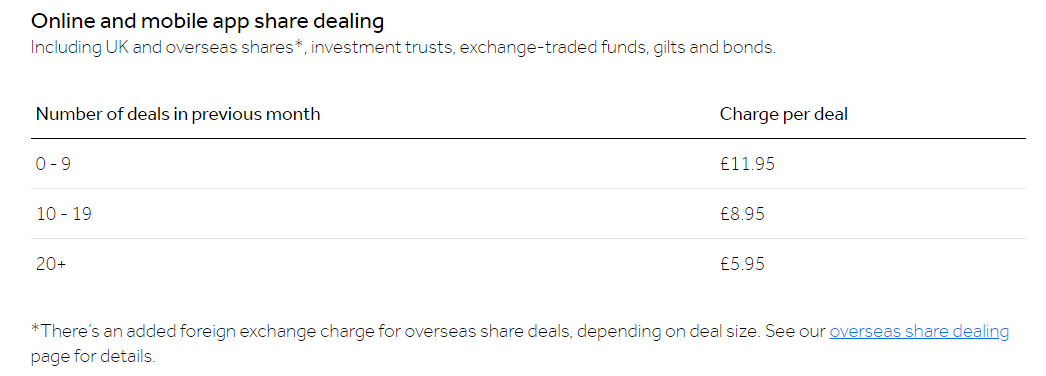
There’s nothing wrong with developing a detailed fee structure, but it is also a tried and tested way of shifting the balance to a broker’s benefit. Applying annual account charges, again on a sliding scale, further muddies the waters.
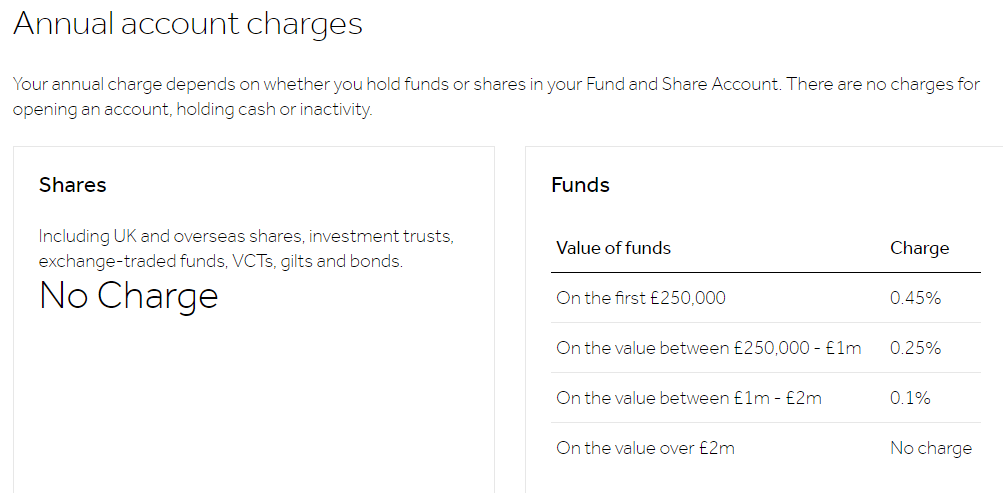
Some of the newer entrants into the broking sector have addressed this issue and provide a clear and detailed breakdown of fees.
There’s still a lot of information to take on board, but the example set by Degiro is to have one document with all the fees clearly laid out. Where possible, transaction costs are set in a way that is easy to factor into your trading strategies ‘break-even’ analysis.
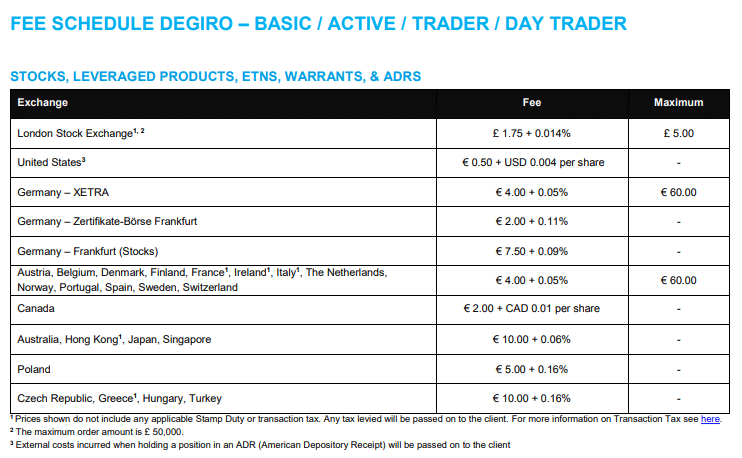
Comparing the headline numbers for trades on the London Stock Exchange shows Degiro fees capped at £5.00. Hargreaves Lansdown has a variable charge, which starts at £5.95.

Hargreaves Lansdown — trade execution fees
Trade execution fees are a good place to start when considering which broker to trade through. The prices charged for buying or selling in a market offer a good idea of where a broker positions itself.
The difference in fees outlined by the Degiro comparison marks Hargreaves Lansdown as some way off the pace in this category.
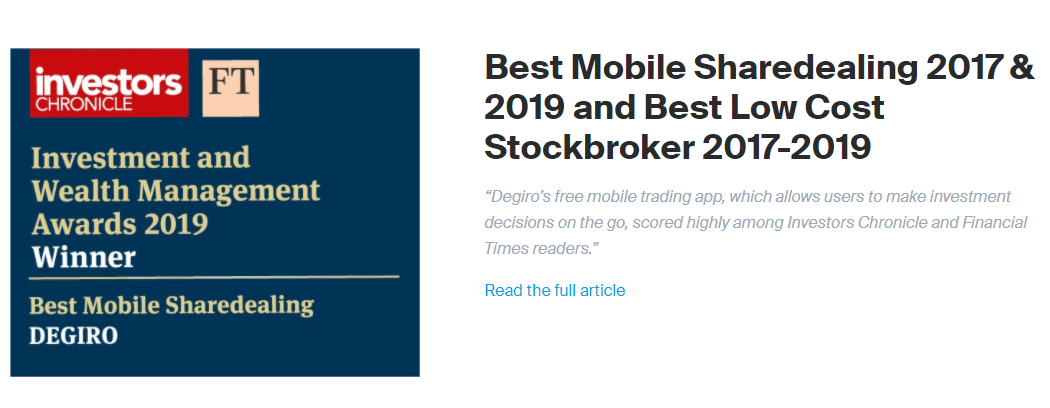
Degiro is well known for being very competitive on fees. It is also a long way from competing on price alone. In 2019, it won the ‘Best Mobile Sharedealing’ award at the Investment Wealth Managers Awards. Any firm with an appetite for providing its clients with new state of the art trading services is worth considering.
Hargreaves Lansdown financing fees
After a trade is made, a broker needs to hold that position on your behalf, provide portfolio reports and pricing updates and comply with regulatory reporting requirements.
Brokers, therefore, also charge fees for the ongoing holding of positions.
These charges typically don’t carry as much weight in broker reviews and can be the area where brokers offer less favourable terms.
It doesn’t have to be that way. The broker eToro, for example, offers zero commissions on some equity trades but also applies no charges for holding that position with them.
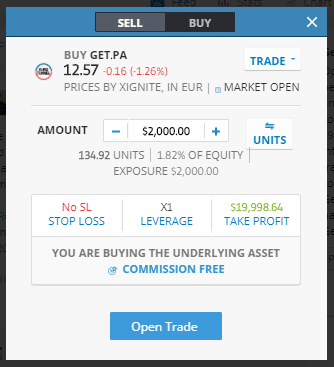
eToro does this by generating sufficient revenue on the spread between bid and offer prices on the initial trade. The bid-offer spread may (or may not) be wider than at HL, but it is certainly easier to work out what the costs are.
Hargreaves Lansdown administration fees
Account administration fees can be a considerable drag on trading performance.
Investment returns on cash balances are a good benchmark of market conditions. With global interest rates at historic lows, savers are struggling to find any kind of return at all.
This makes HL’s annual management charges for funds of 0.45% per annum (Value of fund £0–£250,000) appear quite unattractive. Put another way, your fund will need to make a positive return of at least 0.45% each year for you to just break even.
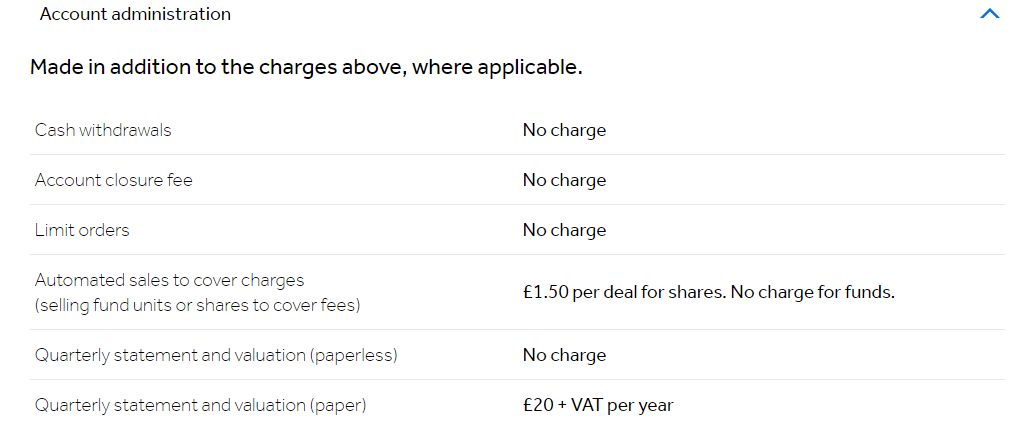
A lot of online brokers don’t charge management fees of this sort. Some do charge inactivity fees. This is to encourage good account management by investors. Dormant accounts as much as active ones still require careful management by the broker.
Inactivity fees can, of course, be avoided by trading enough to satisfy the specific T&Cs. Another option is using one of the brokers that doesn’t charge them.
- IG does apply an inactivity fee and it is $12 per month after two years of inactivity
- eToro does apply an inactivity fee and it is $10 per month after one-year inactivity
- Pepperstone does not charge any account keeping or inactivity fees.
The bottom line
HL has, for a long time, been seen as a convenient and reliable route into the markets.
The firm’s role in the Neil Woodford controversy has led some to review whether HL is the right broker for them. That situation has yet to be fully resolved and the Proactive Investors site is a good source of information and updates.
The Neil Woodford situation also opened the door to a long-overdue review of other aspects of the broker’s business. What is now clear is that members of the investment community don’t have to dig too deep to establish that there are regulated brokers offering better trading terms.
All investors enter the market knowing that price action may not go their way. ‘Market Risk’ is an unavoidable part of trading. The priority for investors is to ensure that the other areas of their trading operation don’t stack the odds any further against them.
If you do make the right call and make a profit, there’s little point in letting some of that game be eaten away by not running a price comparison on broker fees.




